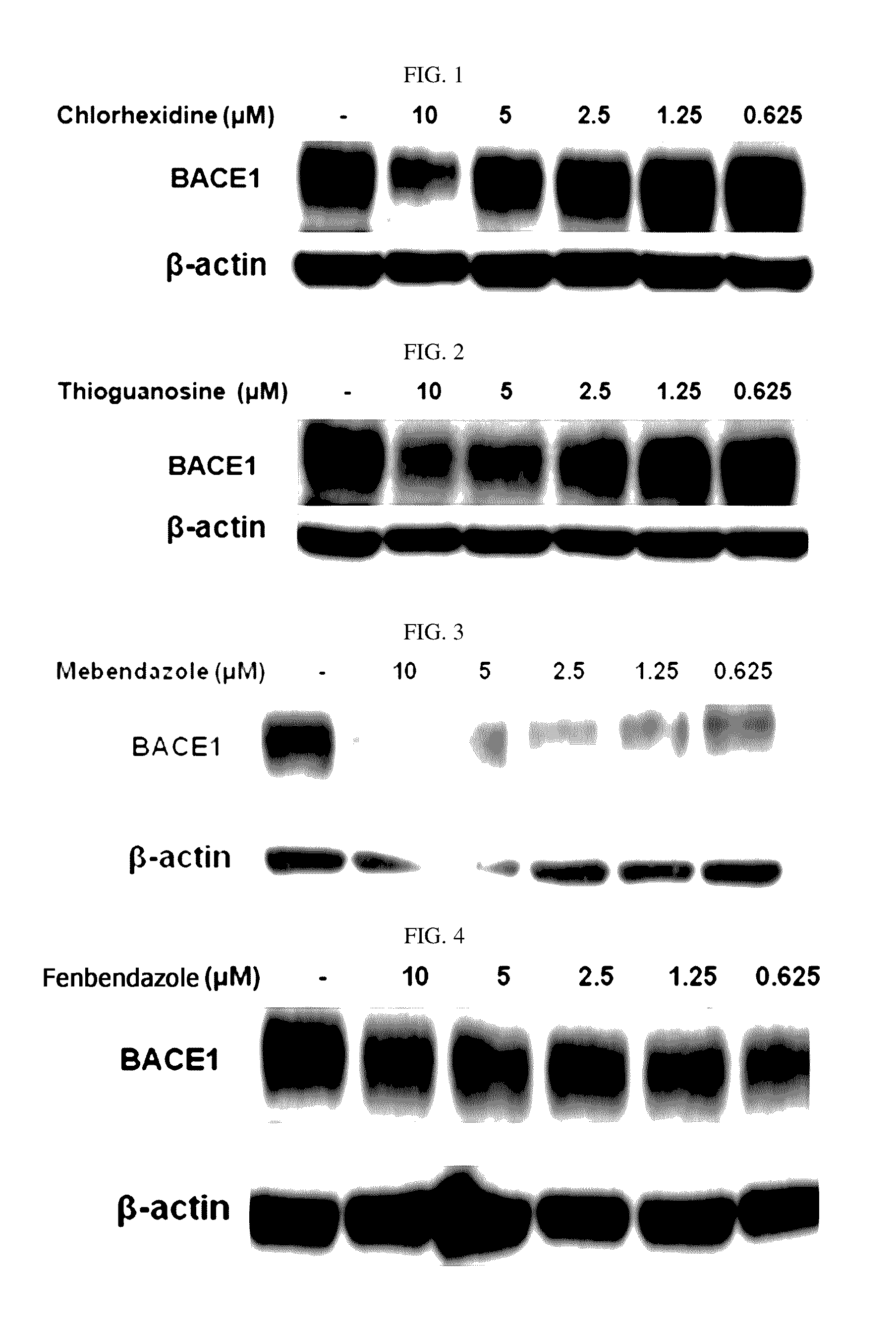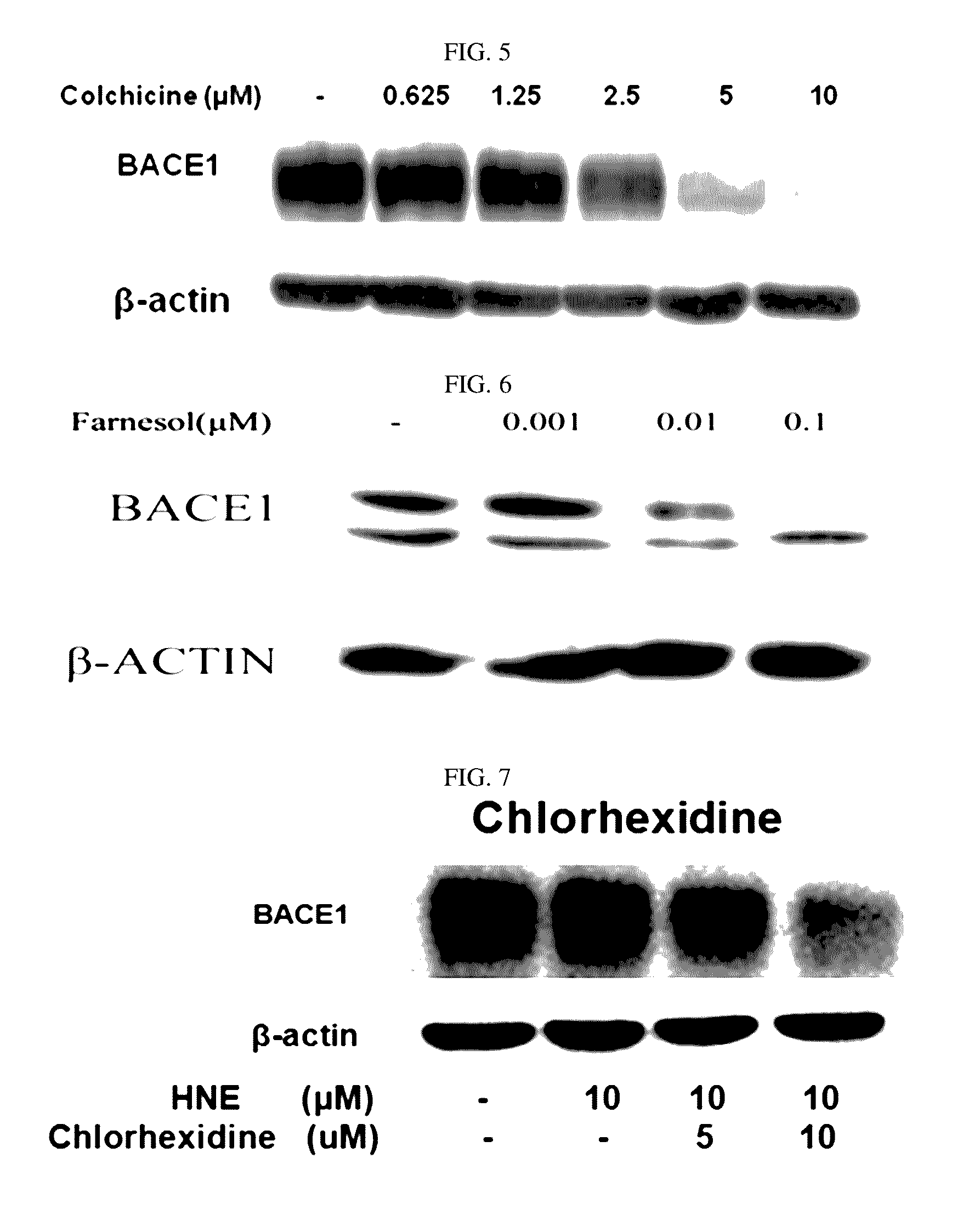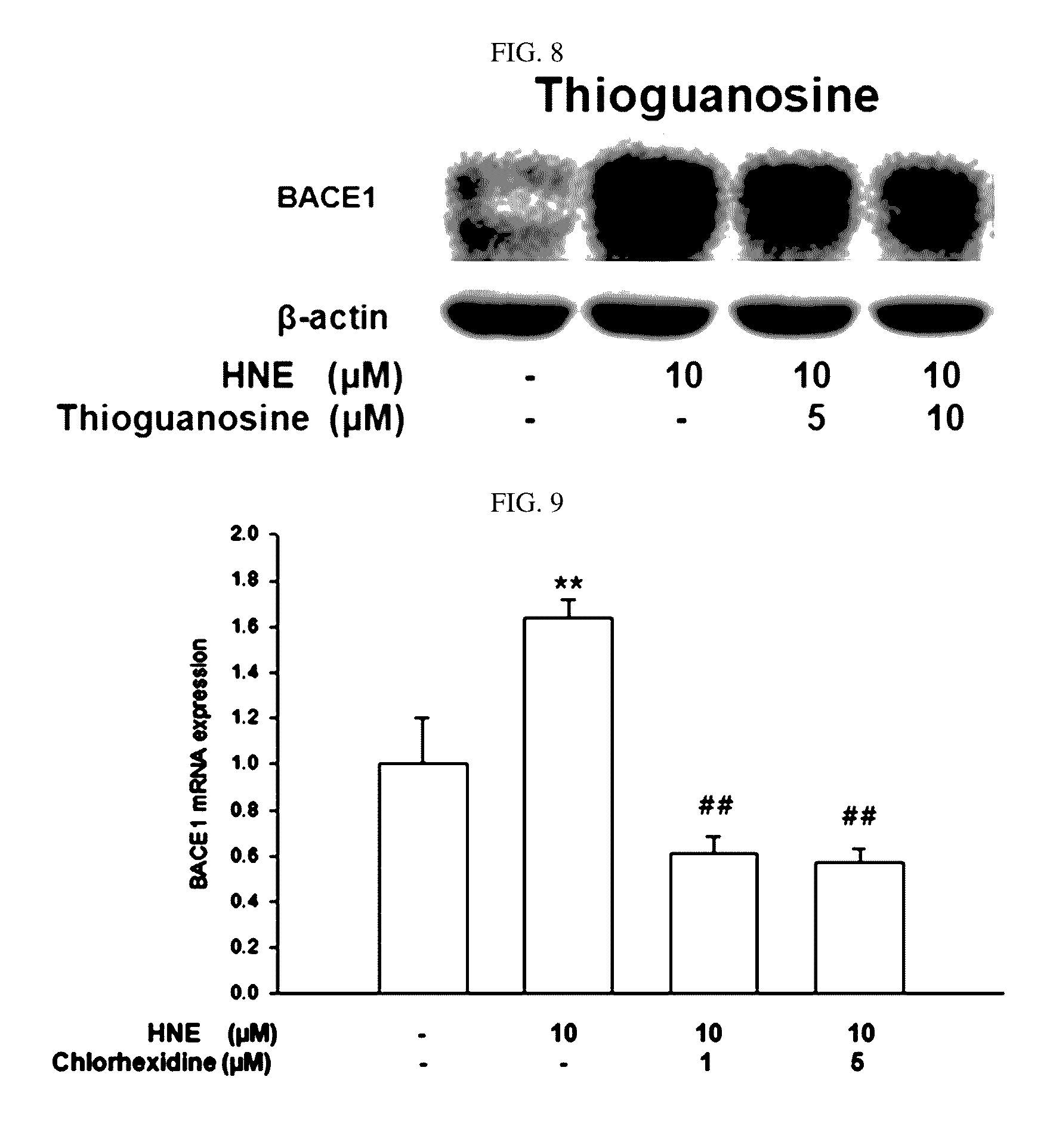Composition for preventing or treating degenerative brain diseases including compound downregulating expression of BACE1 proteins
a technology of bace1 protein and compound, which is applied in the field of compound for downregulating the expression of bace1 protein, can solve problems such as complex cognitive defects, and achieve the effects of suppressing the generation of amyloid beta peptides (a) and reducing the expression of bace1 proteins
- Summary
- Abstract
- Description
- Claims
- Application Information
AI Technical Summary
Benefits of technology
Problems solved by technology
Method used
Image
Examples
example
Example 1
Verification of an Influence of Chlorhexidine, Thioguanosine, Mebendazole, Fenbendazole, Colchicine, and Farnesol on an Amount of Expression of BACE1 Proteins in Brain Nerve Cells
[0090]In order to determine an influence of chlorhexidine, thioguanosine, mebendazole, fenbendazole, colchicine, and farnesol of the present disclosure on BACE1 proteins in brain nerve cells, the following experiment was performed.
[0091]As brain nerve cells, human neuroblastoma cells SH-SY5Y were used. The SH-SY5Y cells were added to a culture solution including a DMEM media (4 mM L-glutamine, 4500 mg / L glucose, and sodium pyruvate), 10% FBS, and 1% penicillin streptomycin, and maintained in an incubator at 37° C. and 5% CO2. The SH-SY5Y cells were plated at 5×105 cells / well into a 6-well plate. Chlorhexidine, thioguanosine, mebendazole, fenbendazole, and colchicine were used as treatments in concentrations of 0.625 μM, 1.25 μM, 2.5 μM, 5 μM, and 10 μM, and farnesol was used as a treatment in conce...
example 2
Verification of an Influence of Chlorhexidine and Thioguanosine on an Amount of BACE1 Expression under Oxidative Stress Conditions of Brain Nerve Cells
[0093]In order to determine an influence of chlorhexidine and thioguanosine of the present disclosure on an amount of BACE1 expression under oxidative stress conditions of brain nerve cells, the following experiment was performed.
[0094]Brain nerve cells, SH-SY5Y cells, were pretreated with chlorhexidine and thioguanosine at 1 μM, 5 μM, and 10 μM for 24 hours. Then, an oxidative stress substance HNE (4-hydroxynonenal) was applied to the SH-SY5Y cells, and a change in the amount of BACE1 proteins was determined by Western blot. A change in an amount of BACE1 mRNA was determined by real-time PCR.
[0095]Changes in the amount of expression of BACE1 proteins of chlorhexidine-treated and thioguanosine-treated SH-SY5Y cells under oxidative stress conditions are shown in FIGS. 7 and 8, and changes in the amount of BACE1 mRNA are shown in FIGS. ...
example 3
Verification of an Influence of Chlorhexidine and Thioguanosine on Generation of Amyloid Precursor Protein Carboxy-terminal Fragments (APP CTFs) under Oxidative Stress Conditions of Brain Nerve Cells
[0098]In order to determine an influence of chlorhexidine and thioguanosine of the present disclosure on APP CTFs under oxidative stress conditions of brain nerve cells, the following experiment was performed.
[0099]Brain nerve cells, SH-SY5Y cells, were pretreated with chlorhexidine and thioguanosine at 5 μM and 10 μM for 24 hours. Then, an oxidative stress substance HNE (4-hydroxynonenal) was used as the treatment, and the generation of APP CTFs (C83 and C99) was determined by Western blot. Under oxidative stress conditions of brain nerve cells treated in accordance with the present disclosure, changes in the generation of APP CTFs are shown in FIGS. 11 and 12.
[0100]As shown in FIGS. 11 and 12, when chlorhexidine or thioguanosine was used as the treatment, an increase in CTFs due to oxi...
PUM
| Property | Measurement | Unit |
|---|---|---|
| weight | aaaaa | aaaaa |
| height | aaaaa | aaaaa |
| diameter | aaaaa | aaaaa |
Abstract
Description
Claims
Application Information
 Login to View More
Login to View More - R&D
- Intellectual Property
- Life Sciences
- Materials
- Tech Scout
- Unparalleled Data Quality
- Higher Quality Content
- 60% Fewer Hallucinations
Browse by: Latest US Patents, China's latest patents, Technical Efficacy Thesaurus, Application Domain, Technology Topic, Popular Technical Reports.
© 2025 PatSnap. All rights reserved.Legal|Privacy policy|Modern Slavery Act Transparency Statement|Sitemap|About US| Contact US: help@patsnap.com



